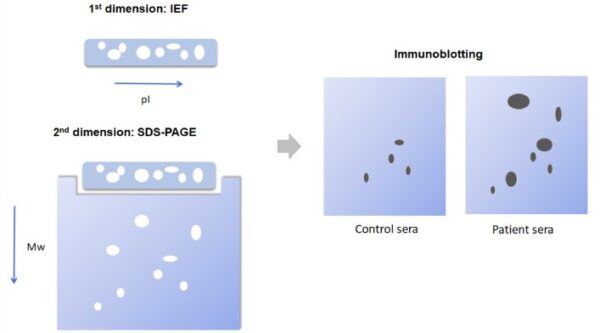The Essential Guide to 2D Electrophoresis

Introduction to 2D Electrophoresis
Two-dimensional electrophoresis (2D electrophoresis) is a powerful technique used in proteomics to separate proteins based on their isoelectric point and molecular weight. This method has revolutionized the study of complex protein mixtures, providing a detailed analysis of protein expression, post-translational modifications, and protein-protein interactions.
How 2D Electrophoresis Works
The process of 2D electrophoresis involves two main steps: isoelectric focusing (IEF) and SDS-PAGE. In the first dimension, IEF separates proteins according to their isoelectric point (pI). The second dimension, SDS-PAGE, further separates these proteins based on their molecular weight.
Step 1: Isoelectric Focusing (IEF)
Isoelectric focusing is the first step in 2D electrophoresis. During this step, proteins are separated within a pH gradient according to their isoelectric point. When proteins reach a position in the gradient where the pH matches their pI, they become electrically neutral and stop moving. This precise separation allows for a high degree of resolution.

Step 2: SDS-PAGE
After IEF, the proteins are subjected to SDS-PAGE. This step separates the proteins by molecular weight. SDS (sodium dodecyl sulfate) is a detergent that denatures proteins, giving them a uniform negative charge. As the proteins migrate through the polyacrylamide gel, smaller proteins move faster than larger ones, allowing for effective separation.

Applications of 2D Electrophoresis
2D electrophoresis is widely used in various fields of biological research. It is particularly valuable in proteomics for comparing protein expression between different samples, identifying biomarkers, and studying disease-related changes in protein composition. This technique is also instrumental in post-translational modification analysis and the identification of protein isoforms.
Advantages of 2D Electrophoresis
One of the major advantages of 2D electrophoresis is its ability to separate thousands of proteins simultaneously. This high-throughput capability is essential for large-scale proteomic studies. Additionally, 2D electrophoresis provides high-resolution separation, allowing researchers to detect even subtle differences in protein composition.
Challenges in 2D Electrophoresis
Despite its advantages, 2D electrophoresis has some limitations. The technique can be time-consuming and requires specialized equipment. Additionally, the resolution of very small or very large proteins can be challenging. However, advances in technology – such as our SameSpots software and hardware such as the Merck Auto2D® Gel Electrophoresis Device – continue to improve the effectiveness of 2D electrophoresis.

Conclusion
2D electrophoresis remains a cornerstone technique in proteomics, offering unparalleled resolution and the ability to analyze complex protein mixtures. Its applications in biological research are vast, making it an indispensable tool for scientists seeking to unravel the mysteries of the proteome. With continued advancements, 2D electrophoresis will likely remain at the forefront of protein analysis for years to come.
